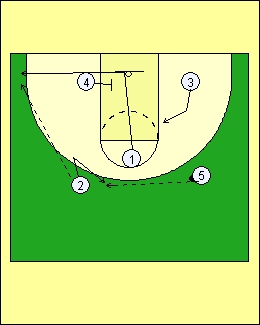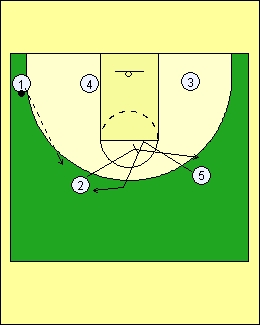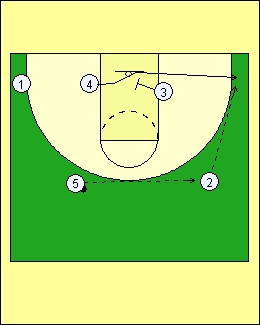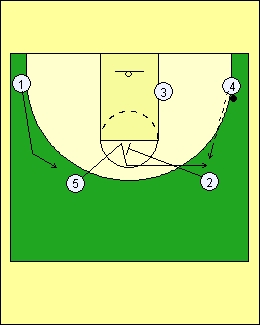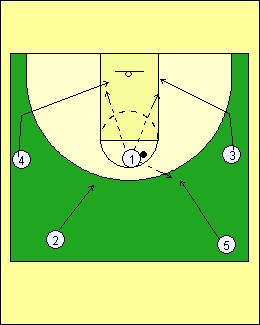
The Transition Game evolves from a traditional fast break! That's the beauty of it! We also run this if we know we don't have the numbers for a fast break, but instead we still use is as a controlled break.
Important note: All positions are interchangeable. Ideally, you would like to get the ball to your point guard (#1) after a rebound before half court and have your best ball handler and decision-maker leading your break. If not then anyone can occupy the middle of the break.
Also, it is important for the players leading the break to "hit the rails" or fill the lanes all the way extended to the sidelines when running a traditional fast break. If the players leading the break "hit the rails" then the guard in the middle (#1) automatically has improved passing angles. Likewise, (#3) and (#4) also have better angles cutting to the basket. The defenders back are forced to work harder. This transition game can be run right out of a fast break or as a controlled break.
(#1) always has the traditional fast break options in passing to (#3) or (#4) cutting to the basket, or certainly the foul line jumper. If no pass is made to (#3) or (#4) then they both occupy the blocks. (#2) and (#5) trail the break and time their movement to the arc to receive a release pass from (#1). This is Rick Pitino's vintage method of receiving a pass stepping right into the arc for a 3-pointer (if your trailers can knock it down). Let's assume (#5) receives the pass from (#1). Odds are he's not a 3-point shooter, but this is an option immediately - stepping into a trey.
